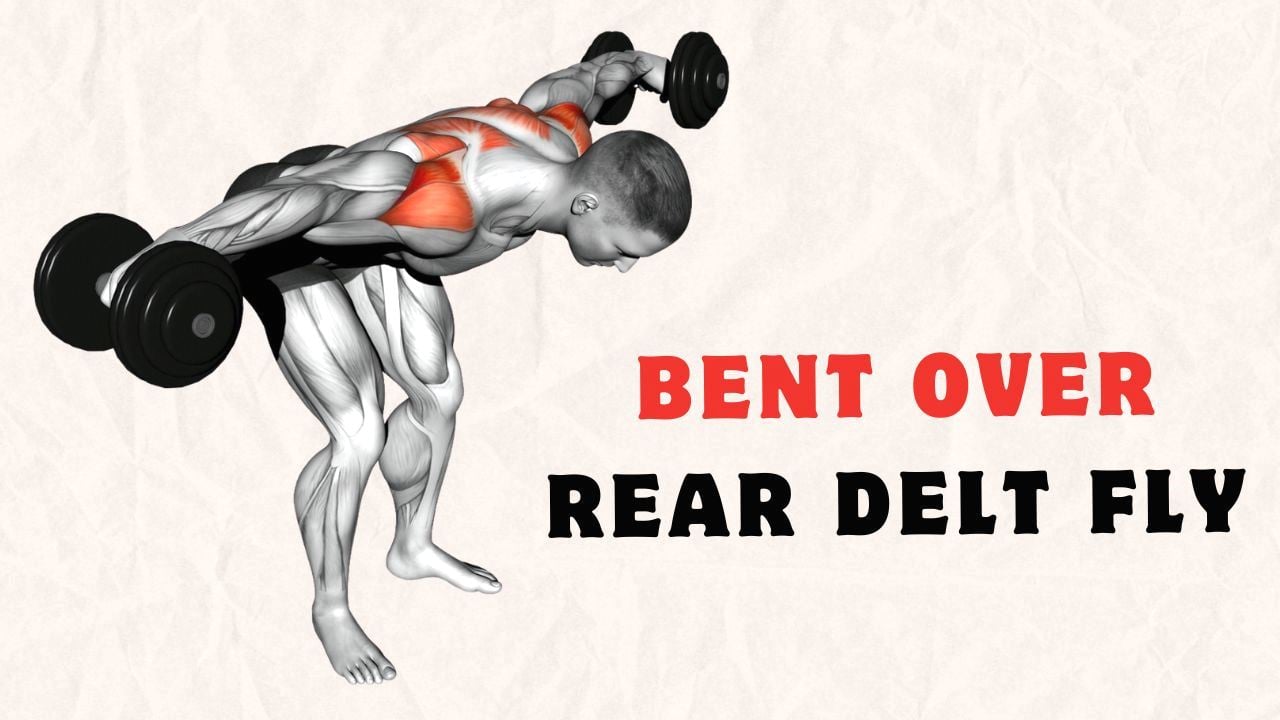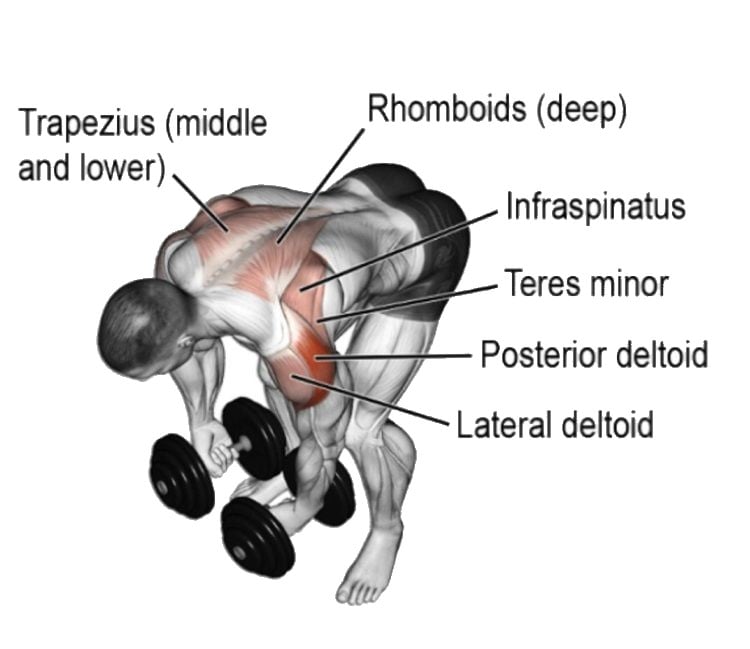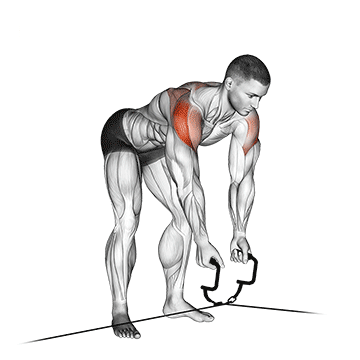The bent-over rear delt fly might seem simple, but it’s a powerhouse for building strength and definition in those often-neglected rear deltoids.
Unlike other shoulder exercises that work for multiple muscle groups, the bent-over rear delt fly focuses directly on those rear delts.
You can perform the bent-over rear delt fly with dumbbells, a cable machine, resistance bands, or even household items like water bottles. It’s a great addition to any shoulder or back workout.

Bent Over Rear Delt Fly Muscles Worked
- The bent over rear delt flys primarily work the rear delt.
- A handful of other muscles worked or stabilizer muscles, including your Lateral deltoid, trapezius, rhomboids, infraspinatus, teres minor, and teres major.
- The standing rear delt fly involves several synergist muscles, including the oblique and core.

How To Do Bent Over Dumbbell Rear Delt Fly
- First, grab a pair of light dumbbells. Trust me, you don’t need to go heavy here. Hold them with a neutral grip (palms facing each other).
- Stand with your feet about shoulder-width apart.
- Bend your knees slightly and hinge at the hips. Lean forward until your upper body is nearly parallel to the floor.
- Let the dumbbells hang down, palms facing each other.
- Keep your arms slightly bent. Lift the dumbbells laterally away from your body and squeeze your shoulder blades together.
- Lift the dumbbells to shoulder height or slightly higher to ensure your arms are parallel to the ground at the movement’s top.
- Lower the dumbbells back to the starting position in a controlled manner.
- Inhale as you lower the weights, and exhale as you lift them.
- Do 10–15 repetitions per set. Perform 3–4 sets with a short rest period in between.
Tips and Techniques
- Don’t go heavy. Choose a lighter weight and focus on perfecting your form.
- Avoid using excessive momentum or swinging your body to lift the weight. This is about stimulating a small muscle group. Focus during the movement.
- Maintain a neutral spine and avoid arching your back or rounding your shoulders.
- Perform this exercise in a slow, controlled manner for best results.
- Don’t forget to breathe! Inhale as you lower the weights and exhale as you raise them.
- You should focus on the contraction of the rear delt at the top of the movement.
- If you’re struggling with form, try this exercise: facing a mirror sideways. It’ll help you monitor your posture and arm position.
- Select sets and rep range according to your fitness level. For muscle growth, it is best to do around 6–12 reps per set.
Bent Over Rear Delt Fly Variations and Modifications
Let’s spice things up and explore some amazing variations and modifications of the bent-over rear delt fly. These changes will make your workouts enjoyable and challenging, so you can get even better results.
1. Cable Bent-Over Rear Delt Fly
Unlike dumbbells or other free weights, cables offer continuous tension throughout the entire range of motion. This means your rear delts are engaged and working harder from start to finish. It is similar to doing regular flyes, but at a higher efficiency.
To make your shoulders and upper back strong and defined without putting too much pressure on your joints, try this exercise.

2. Single-Arm Bent-Over Rear Delt Fly
This unilateral approach helps identify and address any muscle imbalances. It allows you to focus on one side at a time and give muscles better muscle activation and balance.
Single-arm exercises like this one can improve your coordination and stability, as they require you to maintain balance while moving one limb independently.
3. Resistance Band Bent-Over Rear Delt Fly
If you’re looking for a more portable option or want to add some variety to your workouts, try using resistance bands. This means you can exercise your shoulders anytime, whether you’re at home, traveling, or outside.

One of the coolest things about resistance bands is that the tension increases as you stretch them. This means that your muscles work harder at the top of the movement and get more activation and growth.
Stay Fit, Live A Happy And Health Life

Manish is a NASM-certified fitness and nutrition coach with over 10 years of experience in weight lifting and fat loss fitness coaching. He specializes in gym-based training and has a lot of knowledge about exercise, lifting technique, biomechanics, and more.
Through “Fit Life Regime,” he generously shares the insights he’s gained over a decade in the field. His goal is to equip others with the knowledge to start their own fitness journey.

